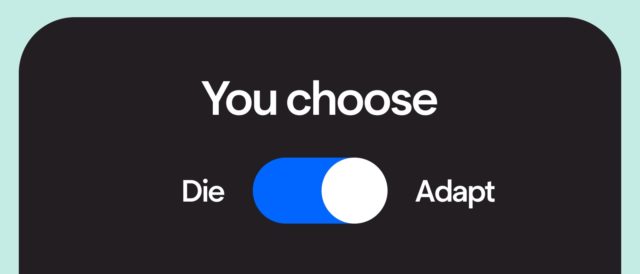But – If you’re working in marketing these words will have been crushing your campaign performance and causing headaches on a daily basis for a while now.
Marketing is inherently all about using data – first, second and third-party data are the lifeblood of paid media campaigns and optimising budgets based on this data is how we produce a return.
Due to these changes, digital marketing is not the same as it once was.
Current privacy changes
GDPR
Arguably the event that kicked all of this into motion, GDPR is the EU’s regulation on what defines “personal data” and how a business must legally obtain and handle this data in order to protect a user’s privacy.
iOS14
iOS 14 brought a lot of privacy-focused changes with it. The biggest change being the requirement for apps to explicitly request permission to store and share a user’s in-app activity data – allowing users the choice to opt-in instead of needing to find options within multiple menus to opt-out.
Loss of cookies
In January, Google confirmed the death of the cookie by 2022 (since delayed to 2023) – Google Chrome is set to block all third-party cookie usage from websites to track site usage, record user data for further marketing and also utility type software like heat mapping and conversion tracking.
How this impacts current strategies
Customer data usage
With the GDPR changes impacting how companies are allowed to save and handle a user’s personal data – in order to use any of this data for marketing activities, users must be given the explicit choice to opt-in to advertising.
Previously, users would be opted in by default and must get in touch with the company to confirm that they want to be removed from marketing lists.
Going forward, Paid Media campaigns using methods like customer match and remarketing – and even tracking a users activity on a website like the pages viewed and time spent on site – all can only be used when a user has opted in.
Paid Social Advertising
All audience based platforms are being impacted by GDPR and iOS 14 – but most noticeably hit by Apple’s changes in particular, is Facebook.
Apple has implemented an opt-in message before all apps are opened to be able to track and share user data – in line with GDPR. This announcement saw a lot of public backlash from Facebook in particular, claiming that the changes were only being made to hinder other businesses and were not made with user privacy as a focus.
Because of this, paid social apps that rely heavily on using personal data, usage statistics and in-platform conversion tracking, such as Facebook & LinkedIn, have been hit incredibly hard. This loss of data from users that opt-out has essentially created a data black hole where all activity, performance data and targeting information is wiped out and hidden from advertisers. While these users will still be able to see your ads and click on them – causing you to pay per click – there is now no reporting on whether this click turned into a sale or lead or was simply wasted.
What does this mean for Paid Advertising?
Long has paid advertising reigned supreme on the incredibly powerful targeting options and ability to report on data to a granular level. Now, a lot of these former key benefits have been removed or heavily-reduced in effectiveness.
This doesn’t mean that paid advertising is no longer effective – agencies and companies alike simply have to change their strategies.
The sniper rifle level of targeting exactly who you want to target with your ads and knowing exactly what they’re likely to do is gone – targeting is now more of a shotgun approach. You’re going to be getting ads in front of much wider audiences than before, and spending a lot more if all of those users click on your ads – it’s absolutely critical that you know they’re the right people and what the result is.
Final thoughts
At Hallam, we’re pivoting the way that we run Paid Media to rely on two key principles – data integration and killer creative.
As we’ve lost the ability to target and optimise based on second and third-party data, first-party data is king. The users that share their information and opt-in to further targeting are now the key to continued strong performance. With automation taking over bidding, budgeting and granular optimisation we need to feed the algorithms with the data that providers don’t have.
Google know all about the user and how to drive a conversion – what they don’t know is how much that user is worth to you. By building into your campaigns and strategies the business data and conversion value beyond that initial touchpoint you can train Google’s smart bidding to see the bottom line revenue that it’s driving and not just ROAS.
When it comes to creative – this is your new secret weapon in narrowing down the audiences and encouraging the right users to click, while conversely ensuring that the wrong users swipe on past.
Creative is the absolute core of every campaign that we run – crafting the right story, the perfect message and a consistent experience is now the best way to drive the right user from the first impression, to click, to conversion.
All in all, it’s not all doom and gloom – there’s a bright future ahead for the user with platforms focusing so heavily on user privacy and protecting our data and this does not have to be at the expense of business profitability. There’s no doubt that it will make our role as a marketer a little bit more difficult with a few more hoops to jump in, but this will also mean that the businesses putting the most effort into the areas that we’ve discussed above will have the best chance to thrive online.
Focus on your creative and feeding in first-party data – all of this should be combined to help ensure that you’re targeting the right people, in the right place, at the right time to convert.
If you have any questions, don’t hesitate to get in touch with us.









